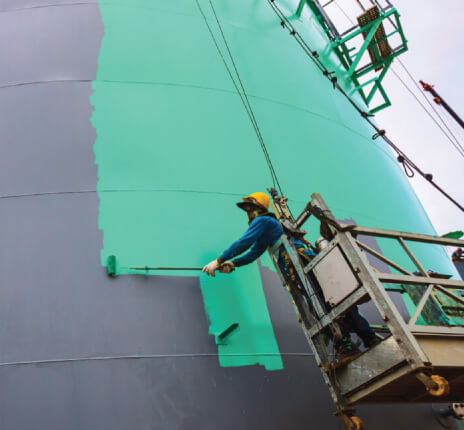Riteks combines decades of industry expertise with cutting‑edge chemical technologies to deliver comprehensive cementing solutions—spanning primary cementing, remedial squeeze jobs, and permanent plug‑and‑abandon operations—that ensure durable zonal isolation, optimized slurry placement, and long‑term well integrity. By leveraging our dedicated powder blending facility, advanced spacer and cement additives, and robust evaluation protocols, we customize each job to meet the unique challenges of your well environment, maximizing performance and minimizing non‑productive time.
Primary Cementing Fundamentals
Primary cementing establishes the hydraulic seal—zonal isolation—between the casing string and formation, preventing fluid migration between producing zones and from the reservoir to the surface. A properly designed cement sheath also anchors the casing and protects it from corrosive formation fluids. Failure to achieve effective zonal isolation compromises production potential and well longevity.
-
Two‑Plug Placement Method: After running casing equipped with guide or float shoes and centralizers, a displacement fluid and our engineered spacer blends (e.g., Riteks MaxGuard‑X or RiSeal) remove drilling fluid from the casing and clean the casing wall, ensuring fluid separation before pumping the cement slurry.
-
Spacer Function: Riteks spacer fluids are formulated to clean surfaces, prevent mud–cement contamination, and maintain rheological properties for even slurry placement.
-
Cement Slurry Design: We tailor slurries using API‑grade cements and over 100 specialized additives—accelerators, retarders, extenders, weighting agents, fluid‑loss control and lost circulation materials—to achieve pumpability, strength development, and durability under downhole conditions up to 400 °F
Advanced Cement Additives
Riteks offers a full suite of additives to optimize cement performance for each job:
-
Accelerators speed strength development for rapid rig clearance.
-
Retarders extend pumpability in high‑temperature or deep‑placement scenarios.
-
Extenders & Weighting Agents adjust slurry density to match formation pressures and prevent cement squeeze.
-
Fluid‑Loss Control agents maintain slurry consistency by minimizing filtrate invasion.
-
Lost Circulation Materials (LCMs) such as Arsenal‑LCM bridge fractures and reinforce formations to prevent cement losses.
-
Specialty Additives (fibers, flexible particles, antifoam) tackle unique challenges and enhance mechanical properties.
Remedial & Squeeze Cementing
When evaluation logs or pressure tests reveal bond defects or fluid channels, Riteks’ remedial cementing systems restore zonal isolation efficiently:
-
Squeeze Cementing Techniques: Spot and block squeezes, straight and circulation squeezes force high‑reactivity slurries into voids and fractures to seal leaks.
-
Targeted Additive Packages: High‑penetration microcements and tailored LCM blends ensure deep slurry penetration and durable seals.
-
Quality Control: On‑site slurry testing and real‑time monitoring confirm barrier placement and set requirements.
Plug‑and‑Abandon Operations
For end‑of‑life wells, Riteks’ plug‑and‑abandon solutions combine cement plugs with self‑healing and elastic sealing technologies to deliver permanent barriers:
-
Multi‑Stage Cement Plugs: Cement plugs set above and below critical zones, with integrity tests at each stage to verify hydraulic isolation.
-
Self‑Healing Additives: “Smart” polymers react with formation fluids to swell and reseal any micro‑annuli or cracks, ensuring indefinite zonal isolation.
-
Regulatory Compliance: Our formulations and procedures meet or exceed all state and federal requirements for well abandonment.
Cement Evaluation & Quality Assurance
Verifying cement integrity is essential to confirm job success and avoid costly remediation:
-
Hydraulic Pressure Testing: Post‑cement pressure tests validate mechanical integrity and seal efficacy before drilling resumes.
-
Acoustic & Ultrasonic Logging: Cement bond logs measure cement–casing bond strength and detect channeling, while ultrasonic logs assess resonant echoes to differentiate solid cement from fluid.
-
Temperature Surveys: Exothermic heat from hydration helps locate the top of cement, confirming complete annular coverage.



